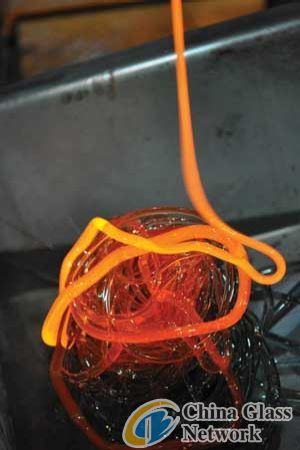Post Time:Apr 17,2012Classify:Industry NewsView:488
It may only be 15 years since the world was wowed by the introduction of the first plasma screen television - a 42 inch Fujitsu model available in Sears for a mere $14,999 - but consumer electronics have since moved on apace, and manufacture of the Cathode Ray Tubes (CRTs) which once dominated the TV market has all but ended. For the waste and recycling industry, which has traditionally sold the glass from end-of-life television sets back to the CRT manufacturers, the rise of the flat screen has created something of a conundrum - what to do with the leaded glass?

Huge numbers of obsolete television sets and computer monitors have been entering the waste stream, a figure which has been estimated to peak in Europe in 2013. Across the world, electronics recycling programmes are collecting growing quantities of CRTs, while at the same time the end uses for recycled CRT glass, which generally constitutes between 15 kg and 30 kg per set, are disappearing.
According to the Partnership for Action on Computing Equipment (PACE) - a multi-stakeholder partnership that provides a forum for governments, industry and NGOs to tackle end-of-life computing equipment - although CRTs are still being manufactured, and clean leaded glass can be used in this manufacture, the market will continue to decline.
Additionally, there is often insufficient value in CRT glass to economically support its shipment to facilities which are mostly located in Asia, where it can be used to make new CRT glass or other leaded-glass applications. As a result it is often discarded or dumped in places where lead may leach into soil and groundwater.
"Our industry is at an interesting crossroads when it comes to CRT glass," explains Robert Erie, CEO of E-World Online, which runs a nationwide network of collectors and recyclers in the U.S. to help consumer electronics manufacturers comply with the extended producer responsibility guidelines being enacted in many states. "In my 12 years in the electronics recycling field, this is the first time that I've seen an e-waste material stream become obsolete and markets dry up so quickly."
In recognition of the problem, the most recent update to the Sanctioned Interpretations of the e-Stewards Standard - a third party certification programme for electronics recyclers run by the Basal Action Network (BAN) - makes allowances for its members to store CRT glass beyond 12 months, until acceptable destinations are available - providing certain criteria are met.
Source: www.waste-management-world.comAuthor: shangyi